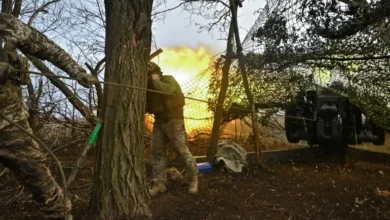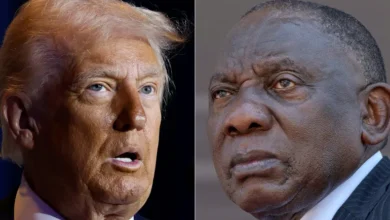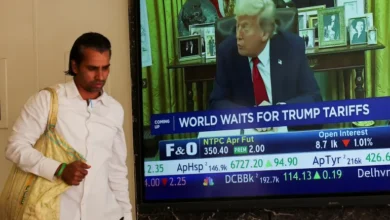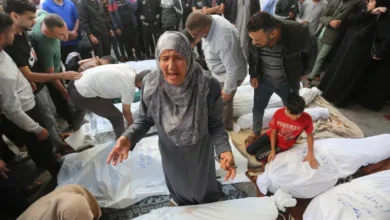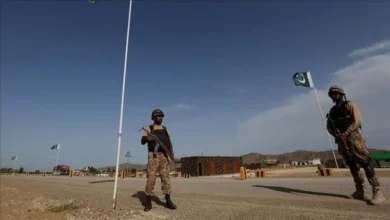Did Ukraine start a drone war on Russia?
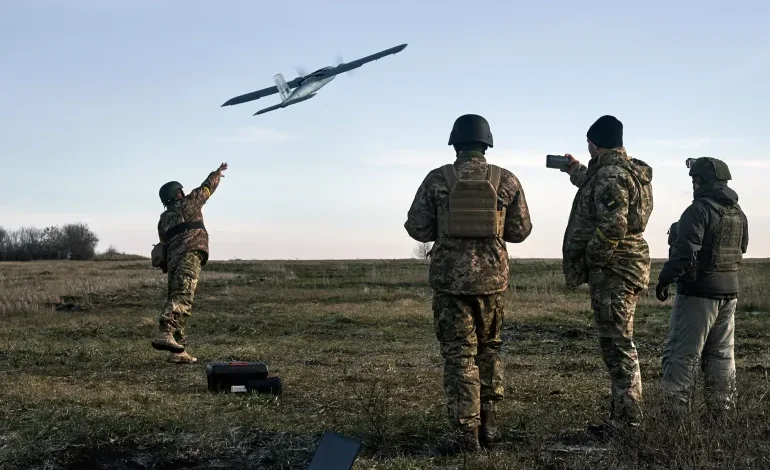
Ukraine on Wednesday denied targeting Russia, suggesting attempts at domestic assaults – which Moscow did not accept.
With a dash of black humour, presidential adviser Mykhailo Podolyak tweeted that a sense of “panic and collapse” was growing in Russia, “manifested by increasing domestic attacks of unidentified flying objects on infrastructure sites”.
Throughout the war, Ukrainian leaders and top brass have routinely refused any responsibility for attacks on Russian soil – and often resort to ridiculing disorganised Russian servicemen.
A Ukrainian military expert said that even though Kyiv can and should attack Russia’s territory, it does not want to divulge details of its operations there.
“We are allowed to deliver strikes on the aggressor nation in principle, but we stick to the rule that if and when it happens, [the strikes] should target military sites firstly,” Lieutenant General Ihor Romanenko, former deputy chief of Ukraine’s general staff of armed forces, told Al Jazeera.
“But because of many circumstances, at this stage, we won’t declare what and how we are doing on enemy territory,” he said.
Analysts have said Kyiv is preparing to launch more attacks with its growing fleet of domestically produced unmanned aircraft – and top pro-Kremlin figures are worried.
“I have a bunch of questions,” Tina Kandelaki, acting head of the TNT television network, wrote on Telegram.
What has happened so far?
On February 26, two blasts rocked an airfield in pro-Putin Belarus damaging one of the most precious Russian weapons – one of only nine A-50 planes that can identify the locations of Ukrainian air defence units. Belarusian “guerrilla fighters” claimed responsibility.
On Monday night, at least four drones fell short of reaching a power station in the western Russian city of Belgorod that sits less than 40km (25 miles) from the border.
And on Tuesday, an “unidentified flying object” was spotted over St Petersburg, where Putin was born.
Air space over Russia’s second-largest city that lies almost 1,500km (930 miles) north of Ukraine was briefly closed, and fighter jets took off as part of a rehearsal – drills to “train for interception and identification of a conditional target,” a defence official reportedly said.
Earlier, though, when asked about the St Petersburg incident, the Kremlin had said little, only that Putin was aware of events.
The same day, at least one drone carrying explosives fell some 100km (60 miles) southeast of Moscow, but caused no damage, according to regional governor Andrey Vorobyev.
Hours earlier, “unidentified flying objects” reportedly crashed near an oil refinery and a farm in southwestern Russia, more than 800km (500m) from the nearest Ukrainian military installations in Odesa.
After two blasts locals reportedly heard, the refinery – the only one on Russia’s Black Sea coast with a tanker terminal – was on fire that engulfed 200 square metres but was quickly put out.
Also on Tuesday, one more “unmanned aircraft of Ukrainian forces” was shot down over the nearby Bryansk region, local officials said.
On Wednesday, Russia said its air defence repelled a drone attack on occupied Crimea, blamed on Ukraine; Moscow has long accused Kyiv of using the weapons to hit the annexed peninsula.
In July, they attacked the headquarters of Russia’s Black Sea fleet in Sevastopol, injuring six and and forcing Moscow-installed authorities to cancel celebrations of Russia’s Navy Day in Crimea.
More drone attacks on Crimea destroyed military planes and an arms depot in August and damaged navy vessels in October.
In early December, a Ukrainian drone hit a Russian military airbase 650km (400 miles) east of the border that hosts strategic bombers used to launch missile strikes on Ukraine.
Most likely, the attacks involved a remodelled, Soviet-designed Tu-141 jet drone that was produced in the eastern Ukrainian city of Kharkiv.
Apparent Ukrainian shelling and drone attacks on westernmost Russian regions such as Belgorod, Kursk, Bryansk and Orlov have become regular since last May as they destroy housing, injure and even kill civilians.
Are Ukraine’s apparent attacks on Russia significant?
According to Nikolay Mitrokhin, a historian with Germany’s Bremen University, most Ukrainian drone attacks on Russian soil have been ineffective so far.
Eight out of 10 Ukrainian drones do not reach their targets, as Russia either found ways to intercept and destroy them, or because they lose connection to their operators, he said.
The drones that do reach the target do not inflict significant danger, he said.
However, “about once a month, Ukrainian forces manage to organise a really large-scale diversion against Russian aviation or, less seldom, Russian fuel stores,” he told Al Jazeera.
However, their effect on the general war scene is far less direct than the use of US-supplied HIMARS multiple rocket launchers, he said.
In recent months in Ukraine, swarms of Russian and Iranian-made Shaheed drones inflicted heavy damage on Ukrainian servicemen, key infrastructure, and residential areas.
In October, one flew right by this reporter’s apartment window.
Kyiv has been frantically looking for a way to counter the attacks.
This week’s attacks are “more of a warning and a test of what the [Ukrainian-made] drones are capable of doing ahead of an offence. A signal to Russia – not to catalyse missile strikes” on Ukraine, Kyiv-based analyst Aleksey Kushch told Al Jazeera.
As Russian forces are saving up resources for an offensive that keeps getting relayed, Ukraine “shows it has something to respond with”, he said.
A Tu-141 was, most likely, used to attack the Tuapse oil refinery on Tuesday.
Russian media claimed that the other attacks were carried out by Russian-made Granat-4 drones, Chinese civilian models loaded with UK-made plastic explosives, or the UJ-22 unmanned aircraft made in Ukraine.
The UJ-22s look like smaller versions of WWII fighter jets and were made public in 2021. They can carry bombs or jet-propelled anti-tank grenades and fly up to 800km (500 miles).
The production of brand new, Ukrainian-made drones is not centralised, and Russia will hardly be able to destroy the manufacturer with pinpoint attacks, he said.

